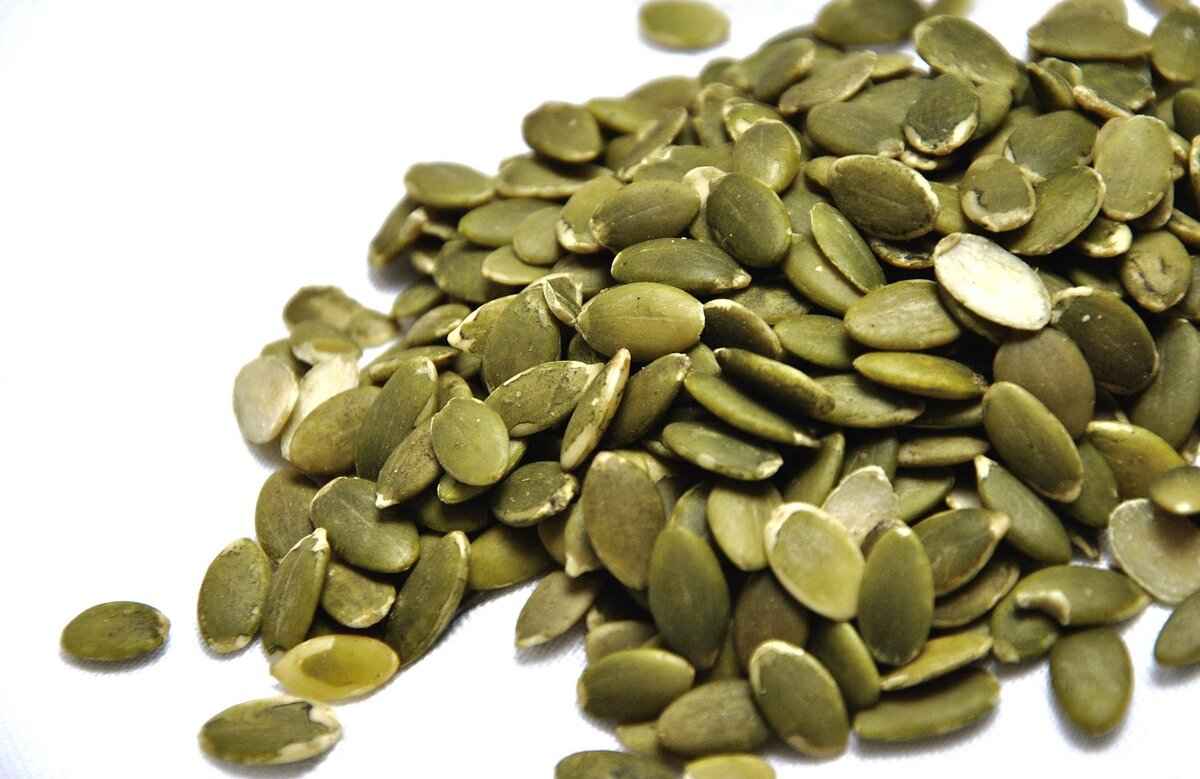This article delves into the fascinating world of chia seeds and the chia plant, offering insights into their cultivation, nutritional benefits, and diverse uses. Whether you’re a health enthusiast or a gardening novice, this comprehensive guide will enhance your understanding of this remarkable superfood.
What Are Chia Seeds?
Chia seeds, obtained from the Salvia hispanica plant, are tiny, nutrient-dense seeds that come in black or white varieties. They are celebrated for their high content of omega-3 fatty acids, fiber, and antioxidants, making them a popular choice among health-conscious individuals.
How Is the Chia Plant Grown?
The chia plant is relatively easy to cultivate, thriving in well-drained soil and specific climatic conditions. Understanding the growth cycle and requirements is essential for successful cultivation.
- Ideal Growing Conditions for Chia: Chia plants flourish in warm climates with abundant sunlight and moderate rainfall. Regions like Central and South America are particularly suitable for their growth.
- Soil Requirements: Chia seeds prefer sandy or loamy soil that drains well. Conducting soil tests for pH and nutrient levels can significantly impact the health and yield of your chia crop.
- Watering and Maintenance: Regular watering is crucial, especially during dry spells. However, care must be taken to avoid overwatering, which can lead to root rot.
Harvesting Chia Seeds
Harvesting chia seeds typically occurs around 90-120 days after planting. Monitoring the plants for maturity is essential to ensure optimal seed quality.
What Are the Nutritional Benefits of Chia Seeds?
Chia seeds are renowned for their impressive nutritional profile. They are packed with fiber, protein, and essential fatty acids, making them an excellent addition to any diet.
- High Fiber Content: With a remarkable fiber content, chia seeds promote digestive health, aiding in regularity and providing a feeling of fullness, which can assist in weight management.
- Rich in Omega-3 Fatty Acids: These seeds are one of the richest plant sources of omega-3 fatty acids, vital for heart health and reducing inflammation.
How to Incorporate Chia Seeds into Your Diet?
Incorporating chia seeds into your meals is simple and versatile. Here are some popular methods:
- Sprinkling on Salads: Enhance the nutritional value of your salads by adding chia seeds.
- Blending into Smoothies: Chia seeds can be easily blended into smoothies for added texture and nutrition.
- Creating Chia Pudding: Mix chia seeds with milk or a milk alternative to create a delicious pudding.
Are There Any Side Effects of Chia Seeds?
While generally safe, chia seeds can cause side effects in some individuals, especially if consumed in excess or without adequate hydration.
- Potential Allergic Reactions: Though rare, some people may experience allergic reactions, leading to symptoms such as itching or gastrointestinal distress.
- Importance of Hydration: Due to their high fiber content, it’s crucial to drink plenty of water when consuming chia seeds to prevent any digestive issues.
Where to Buy Quality Chia Seeds?
Finding high-quality chia seeds is essential for maximizing their health benefits. You can find them in health food stores or online.
- Choosing Organic vs. Non-Organic: Organic chia seeds are often preferred for their lack of pesticides, making them a healthier choice.
- Understanding Labels: Carefully reading labels can help you identify the best chia seeds, focusing on sourcing, packaging, and expiration dates for optimal freshness.
In summary, chia seeds offer extensive health benefits and are easy to incorporate into various meals. By understanding how to grow and utilize them, you can enhance your diet and enjoy the numerous advantages these tiny seeds have to offer.
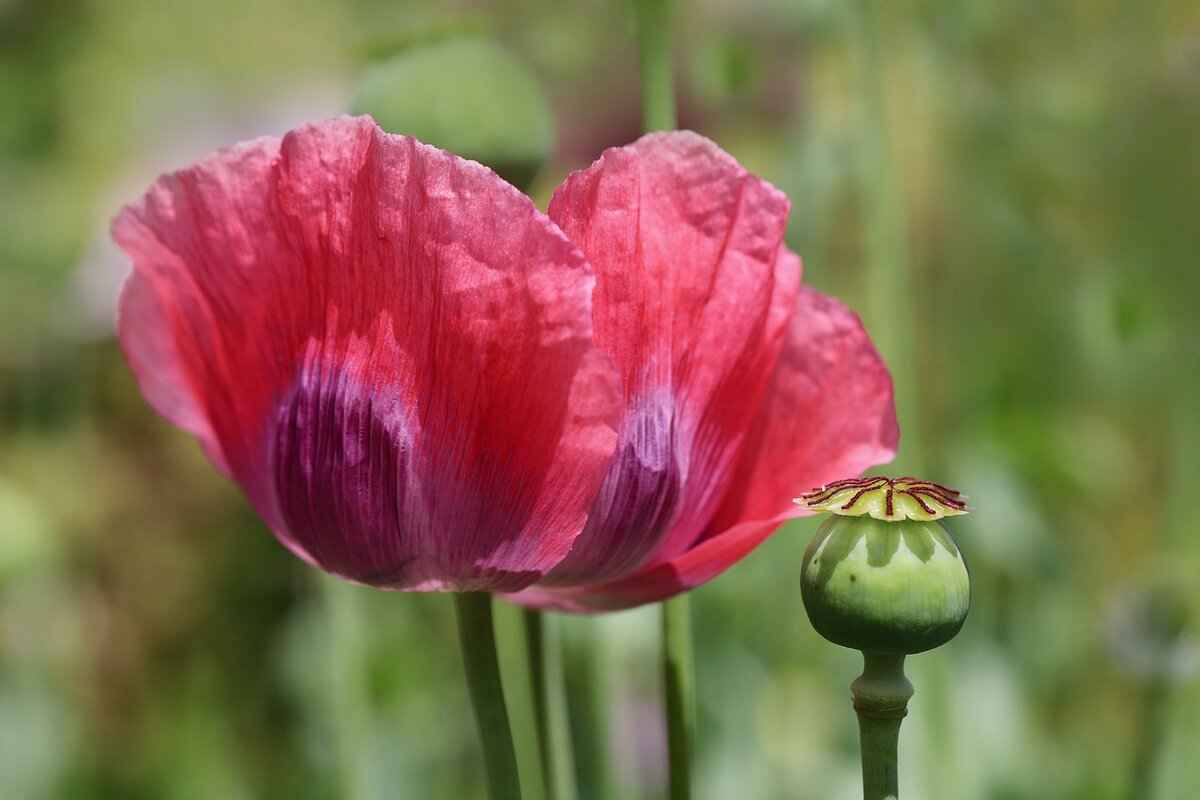
What Are Chia Seeds?
Chia seeds, sourced from the Salvia hispanica plant, are small yet mighty seeds that have gained immense popularity in the health and wellness community. These tiny seeds, which can be either black or white, are renowned for their nutritional benefits and versatility in various culinary applications. Packed with essential nutrients, chia seeds are often heralded as a superfood, making them a staple in many diets.
Chia seeds are a rich source of omega-3 fatty acids, which are crucial for maintaining heart health. These fatty acids play a significant role in reducing inflammation and supporting brain function. Additionally, chia seeds are loaded with fiber, providing about 11 grams of fiber per ounce. This high fiber content aids in digestion and promotes a feeling of fullness, which can be beneficial for weight management.
The soluble fiber in chia seeds absorbs water and expands in the stomach, helping to regulate digestion and prevent constipation. This characteristic makes chia seeds an excellent addition to a balanced diet, especially for those looking to enhance their digestive health. Furthermore, the fiber content can help stabilize blood sugar levels, making chia seeds a smart choice for individuals with diabetes.
Chia seeds are also an excellent source of plant-based protein, containing about 4 grams per ounce. This makes them a valuable addition to vegetarian and vegan diets, where protein sources may be limited. The combination of protein, fiber, and healthy fats in chia seeds creates a nutrient-dense food that can help support muscle growth and overall health.
Incorporating chia seeds into your meals is both easy and versatile. Here are some popular ways to enjoy them:
- Chia Pudding: Mix chia seeds with your choice of milk or plant-based milk and let them sit overnight to create a delicious pudding.
- Smoothies: Add a tablespoon of chia seeds to your smoothies for an extra nutritional boost.
- Salads: Sprinkle chia seeds on salads for added crunch and nutrition.
- Baking: Incorporate chia seeds into baked goods like muffins or bread for added texture and health benefits.
While chia seeds are generally safe for most people, some individuals may experience side effects, particularly when consuming them in large quantities. Hydration is key; due to their high fiber content, it is essential to drink enough water when consuming chia seeds to avoid digestive discomfort. Additionally, those with allergies to sesame seeds or other similar seeds should approach chia seeds with caution.
When looking to purchase chia seeds, it is crucial to choose high-quality products to maximize their health benefits. You can find chia seeds at health food stores, supermarkets, and online retailers. When selecting chia seeds, consider opting for organic varieties to avoid pesticides and ensure better quality. Reading product labels can also help you identify the best options, focusing on freshness and sourcing.
In summary, chia seeds are a nutrient-dense food that offers numerous health benefits, from supporting heart health to aiding digestion. Their versatility makes them easy to incorporate into various meals, making them an excellent choice for anyone looking to enhance their diet.
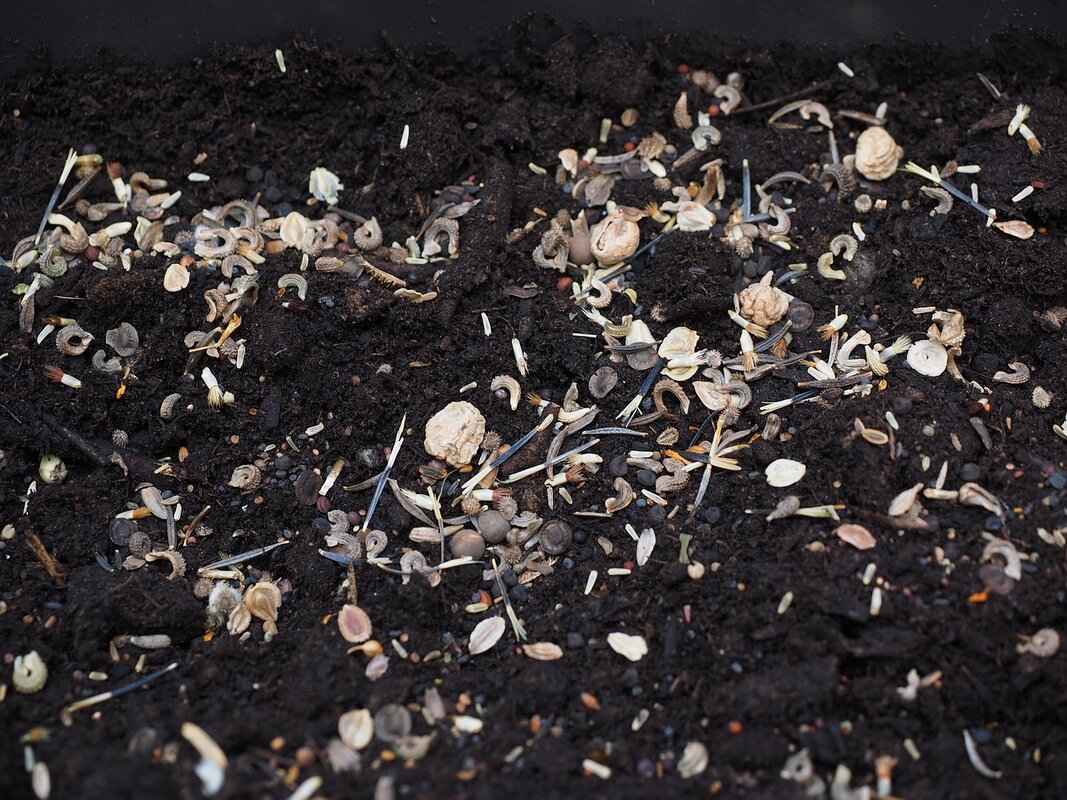
How Is the Chia Plant Grown?
The cultivation of the chia plant is an intriguing journey that begins with understanding its specific needs and growth cycle. As a member of the mint family, the chia plant, or Salvia hispanica, has gained popularity for its nutritional seeds, which are rich in omega-3 fatty acids, fiber, and antioxidants. This article delves into the essential aspects of growing chia, from soil requirements to maintenance practices, ensuring a successful harvest.
Chia plants flourish in warm climates with plenty of sunlight. They thrive best in areas that experience moderate rainfall, typically found in regions like Central and South America. The ideal temperature range for chia cultivation is between 60°F to 100°F (15°C to 38°C). Understanding these conditions is crucial for anyone looking to cultivate this nutritious crop.
Chia seeds prefer sandy or loamy soil that drains well. It is essential to conduct a soil test to assess the pH level, which should ideally be between 6.0 and 8.0. Adequate drainage is vital, as chia plants are susceptible to root rot if the soil retains too much moisture. Adding organic matter can enhance soil fertility and structure, promoting healthy plant growth.
Regular watering is crucial, especially during dry spells. Chia plants require about 12 to 15 inches of rainfall annually. However, overwatering can lead to detrimental effects, so it’s important to maintain a balance. Mulching can help retain soil moisture and suppress weeds, ensuring that the plants receive the right amount of water without the risk of waterlogging.
The growth cycle of the chia plant typically spans 90 to 120 days from planting to harvest. Initially, the seeds germinate within a week under optimal conditions. Following germination, the plants grow rapidly, developing lush green foliage. During the flowering stage, which occurs around 6 to 8 weeks after planting, the plants produce beautiful purple flowers, which eventually give way to the chia seeds.
Harvesting chia seeds requires careful monitoring of the plants for maturity. The seeds are ready to be harvested when the flowers have dried and turned brown, usually around 90 to 120 days post-planting. It’s essential to harvest at the right time to ensure optimal seed quality. The seeds can be collected by cutting the flower heads and allowing them to dry further before extracting the seeds.
While growing chia can be rewarding, there are challenges to consider. Pests and diseases can affect chia plants, including aphids and fungal infections. Implementing good agricultural practices, such as crop rotation and maintaining plant hygiene, can mitigate these risks. Additionally, understanding local climate conditions can help in planning the planting schedule to avoid unfavorable weather.
In conclusion, cultivating chia plants requires knowledge of their ideal growing conditions, soil requirements, and maintenance practices. By understanding the growth cycle and potential challenges, aspiring growers can successfully produce this nutritious crop. With proper care and attention, chia cultivation can yield a bountiful harvest, contributing to a healthy diet and lifestyle.
Ideal Growing Conditions for Chia
When it comes to cultivating chia plants, understanding their ideal growing conditions is crucial for achieving a successful harvest. Chia plants, scientifically known as Salvia hispanica, are native to warm climates, and their growth is significantly influenced by environmental factors.
Chia plants thrive in warm climates characterized by ample sunlight and moderate rainfall. This makes regions like Central and South America particularly suitable for their cultivation. The optimal temperature range for chia growth is between 60°F and 100°F (15°C to 38°C). In these conditions, the plants can grow robustly and produce high-quality seeds.
Chia plants require a full sun exposure, ideally receiving at least 6 to 8 hours of direct sunlight daily. Insufficient sunlight can lead to stunted growth and lower seed yields. Thus, selecting a planting site with good sun exposure is essential for any aspiring chia farmer.
Moderate rainfall is vital for chia plants, with the ideal annual precipitation ranging from 12 to 30 inches (300 to 750 mm). While chia plants are relatively drought-resistant, they still require consistent moisture during their growing season. During dry spells, irrigation may be necessary to ensure the plants receive adequate water without over-saturating the soil. Overwatering can lead to root rot, which can severely impact plant health.
Chia seeds prefer well-drained soils, specifically sandy or loamy types that allow for proper drainage. The pH level of the soil should ideally be between 6.0 and 8.0. Conducting a soil test before planting can help determine nutrient levels and pH balance, allowing for necessary amendments to support healthy plant growth.
While chia plants are adaptable, they do not fare well in extreme temperatures. Frost can be detrimental, so it’s essential to plant chia seeds after the last frost date in your region. Additionally, excessive heat can stress the plants, leading to poor seed formation. Therefore, monitoring temperature fluctuations is crucial for successful chia cultivation.
Regions with a combination of warm temperatures, ample sunlight, and adequate rainfall are ideal for chia farming. Countries like Mexico, Argentina, and Bolivia have become prominent producers of chia seeds, leveraging their natural climatic advantages. For gardeners in other regions, creating a controlled environment, such as a greenhouse, can help mimic these conditions.
Understanding the ideal growing conditions for chia plants is essential for anyone looking to cultivate this nutritious crop. By ensuring the right climate, soil, and watering practices, growers can maximize their yield and enjoy the many health benefits that chia seeds offer.
Soil Requirements for Chia Cultivation
When it comes to cultivating chia seeds, understanding the soil requirements is crucial for ensuring a successful harvest. Chia seeds, derived from the Salvia hispanica plant, thrive in conditions that promote drainage and nutrient availability. In this segment, we will explore the essential aspects of soil composition, pH levels, and the importance of nutrient testing to optimize chia crop health and yield.
Chia plants prefer sandy or loamy soil that allows for excellent drainage. This type of soil helps prevent waterlogging, which can lead to root rot and other detrimental conditions. The ideal soil texture should be loose enough to facilitate root expansion while retaining some moisture and nutrients.
The pH level of the soil plays a vital role in the health of the chia plant. Chia seeds thrive in slightly acidic to neutral soil with a pH range of 6.0 to 7.0. Regular testing of soil pH can help farmers make informed decisions about soil amendments. If the pH is too low or too high, it can hinder nutrient absorption, ultimately affecting the plant’s growth and yield.
Conducting a soil nutrient test is essential for understanding the nutrient profile of the soil. This process typically involves:
- Collecting soil samples from various locations in the field.
- Sending the samples to a laboratory for analysis.
- Receiving a report detailing nutrient levels, including nitrogen, phosphorus, and potassium.
Based on the results, farmers can apply the necessary fertilizers to enhance soil fertility, ensuring that the chia plants receive the essential nutrients required for optimal growth.
The quality of the soil directly impacts the health and yield of the chia crop. Well-drained, nutrient-rich soil promotes strong root development, leading to healthier plants that can withstand environmental stressors. Conversely, poor soil quality can result in stunted growth and lower yields. Regular amendments, such as compost or organic fertilizers, can significantly improve soil quality over time.
To maintain optimal soil health for chia cultivation, consider the following best practices:
- Crop Rotation: Rotating chia with other crops can help prevent soil depletion and reduce pest and disease pressure.
- Organic Matter Addition: Incorporating organic matter, such as compost or cover crops, can enhance soil structure and nutrient content.
- Minimal Tillage: Reducing tillage can help preserve soil structure and prevent erosion.
By following these practices, farmers can create a sustainable environment for chia plants, leading to higher yields and better quality seeds.
In summary, understanding the soil requirements for chia cultivation is fundamental for any aspiring chia farmer. By focusing on soil type, pH levels, and nutrient testing, growers can significantly enhance the health and productivity of their chia crops. With the right soil management practices, chia seeds can thrive, offering numerous health benefits to consumers worldwide.
Watering and Maintenance Practices
are essential components in the successful cultivation of chia plants. Understanding how to properly water these plants can significantly impact their growth and yield.
Chia plants, known for their resilience and adaptability, thrive best when given the right amount of water. During periods of dry weather, regular watering becomes crucial. This is particularly important to ensure that the plants receive adequate moisture, which is vital for their growth and seed production. However, it’s equally important to recognize that overwatering can be detrimental, leading to issues such as root rot. Therefore, finding the right balance is key.
Here are some essential tips for effective watering and maintenance:
- Monitor Soil Moisture: Before watering, check the soil moisture level. This can be done by sticking your finger into the soil about an inch deep. If it feels dry, it’s time to water.
- Water Deeply: When you do water, ensure that you water deeply. This encourages the roots to grow deeper into the soil, making the plants more resilient to drought conditions.
- Timing is Crucial: Watering in the early morning or late afternoon can reduce evaporation and ensure that the plants absorb the moisture effectively.
- Use Mulch: Applying a layer of mulch around the base of the plants can help retain soil moisture and regulate temperature, reducing the need for frequent watering.
In addition to watering, regular maintenance practices play an essential role in the health of chia plants. Here are some practices to consider:
- Weed Control: Keeping the area around the chia plants free from weeds is vital. Weeds compete for nutrients and water, which can hinder the growth of your chia plants.
- Pest Management: Regularly inspect your plants for signs of pests. Early detection and management can prevent infestations that could damage your crop.
- Fertilization: While chia plants do not require heavy fertilization, a balanced fertilizer can be beneficial, especially during the early growth stages.
Understanding the specific needs of chia plants can make a significant difference in their growth and productivity. By maintaining a consistent watering schedule and implementing proper maintenance practices, you can ensure that your chia plants thrive and produce high-quality seeds.
In summary, water management is a delicate balance that requires attention and care. By following these guidelines, you can cultivate healthy chia plants that yield nutritious seeds for various culinary uses. Remember, the key to successful chia cultivation lies in the harmony between adequate watering and diligent maintenance.
Harvesting Chia Seeds
Harvesting chia seeds is a critical phase in the cultivation process, requiring keen observation and precise timing. The chia plant, Salvia hispanica, typically reaches maturity between 90 to 120 days after planting. Understanding when to harvest is essential to ensure the best quality seeds, which are known for their numerous health benefits.
The key to successful harvesting lies in recognizing the signs of maturity. Farmers should monitor the plants closely as they approach the end of their growth cycle. The leaves will begin to yellow, and the flowers, which are typically purple or white, will have transformed into seed heads. At this stage, the seeds will be hard and dark, indicating they are ready for harvest.
- Timing: Harvesting should be done on a dry day to prevent moisture from affecting the seeds.
- Tools: Use a sharp knife or sickle to cut the seed heads from the plant.
- Handling: Handle the seed heads gently to avoid damaging the seeds.
Once harvested, the next step is to separate the seeds from the chaff. This can be accomplished through a process known as threshing, which involves shaking or beating the seed heads to release the seeds. After this, the seeds should be cleaned to remove any remaining debris. It is advisable to use a fine sieve or mesh to ensure that only the seeds remain.
Proper storage is crucial to maintain the quality of chia seeds. They should be kept in a cool, dry place, ideally in an airtight container to prevent moisture absorption. Chia seeds can last for up to four years if stored correctly. Regularly checking for signs of spoilage, such as off odors or discoloration, is also essential.
Harvesting at the right time ensures that the seeds are fully developed, which directly affects their nutritional value and viability. If harvested too early, the seeds may not have reached their full potential in terms of omega-3 fatty acids and other nutrients. Conversely, waiting too long can lead to seed loss as they may fall to the ground or become susceptible to pests.
Farmers may encounter several challenges during the harvesting process. Weather conditions can play a significant role; for instance, unexpected rain can delay harvesting and affect seed quality. Additionally, pests such as birds and insects may be attracted to the mature seed heads, posing a risk to the harvest.
In summary, harvesting chia seeds is a meticulous process that requires knowledge and attention to detail. By understanding the signs of maturity, employing effective harvesting techniques, and ensuring proper storage, growers can maximize the quality and longevity of their chia seeds. This not only benefits their health but also enhances the overall success of chia cultivation.
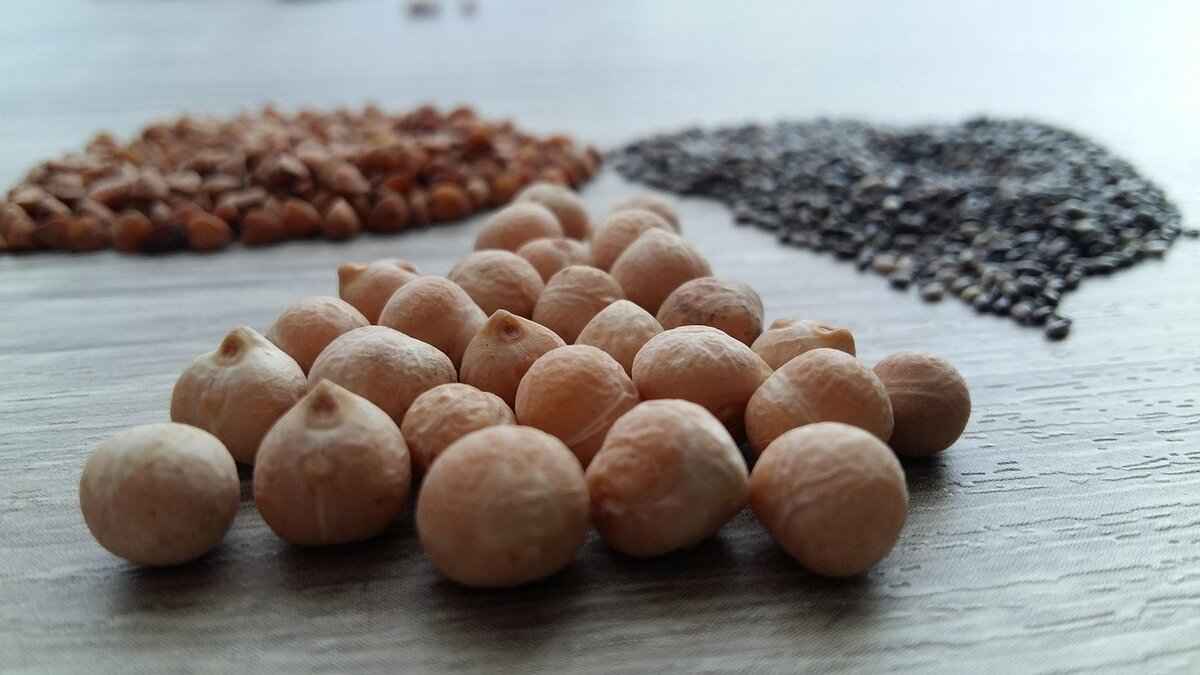
What Are the Nutritional Benefits of Chia Seeds?
Chia seeds, derived from the Salvia hispanica plant, are gaining popularity in health circles due to their impressive nutritional profile. These tiny seeds are not only easy to incorporate into meals but also offer a myriad of health benefits that make them a staple for health-conscious individuals. Let’s delve deeper into the nutritional benefits of chia seeds and how they can enhance your overall well-being.
Chia seeds are a nutrient-dense food that provides a variety of essential nutrients, including:
- Fiber
- Protein
- Omega-3 Fatty Acids
- Antioxidants
- Vitamins and Minerals
One of the standout features of chia seeds is their high fiber content. Just two tablespoons of chia seeds contain about 11 grams of fiber, which is approximately 44% of the recommended daily intake. This fiber is primarily soluble, which means it absorbs water and forms a gel-like substance in your stomach. This process not only promotes regular bowel movements but also helps you feel fuller for longer, making chia seeds an excellent addition for those looking to manage their weight.
Chia seeds are renowned for being one of the richest plant sources of omega-3 fatty acids, particularly alpha-linolenic acid (ALA). Omega-3s are crucial for heart health, as they help reduce inflammation and lower blood pressure. Incorporating chia seeds into your diet can contribute to a healthier heart and may also support brain function, making them a valuable addition to any meal plan.
Chia seeds are packed with antioxidants, which help combat oxidative stress and reduce inflammation in the body. These antioxidants can protect your cells from damage caused by free radicals, potentially lowering the risk of chronic diseases. Including chia seeds in your diet can enhance your body’s defenses against various health issues.
In addition to fiber and omega-3s, chia seeds are a good source of several essential vitamins and minerals, including:
- Calcium
- Magnesium
- Phosphorus
- Iron
These nutrients play vital roles in maintaining bone health, muscle function, and overall metabolic processes within the body. For individuals who follow a plant-based diet, chia seeds can serve as an excellent source of these important nutrients.
Adding chia seeds to your meals is both simple and versatile. Here are some popular methods:
- Chia Pudding: Mix chia seeds with your choice of milk or yogurt and let it sit overnight for a nutritious breakfast.
- Smoothies: Blend chia seeds into your favorite smoothie for an added nutrient boost.
- Salads: Sprinkle chia seeds on salads for added crunch and nutrition.
- Baking: Incorporate chia seeds into baked goods such as muffins or bread.
In conclusion, chia seeds are a nutritional powerhouse that can easily enhance your diet. Their high fiber content, rich omega-3 fatty acids, antioxidants, and essential vitamins and minerals make them an excellent choice for promoting overall health. Whether you’re looking to improve your digestive health, support heart function, or simply add more nutrients to your meals, chia seeds are a fantastic option to consider.
High Fiber Content and Digestive Health
Chia seeds, renowned for their high fiber content, play a pivotal role in promoting digestive health. This tiny superfood is not only a nutritional powerhouse but also a key ally in maintaining a healthy digestive system. The significant amount of soluble and insoluble fiber found in chia seeds contributes to various health benefits, making them an essential addition to your diet.
One of the primary advantages of consuming chia seeds is their ability to aid in regular bowel movements. The soluble fiber in chia seeds absorbs water, expanding in the digestive tract. This process creates a gel-like substance that helps to soften stool, making it easier to pass. As a result, chia seeds can effectively combat constipation and promote overall gut health.
In addition to enhancing regularity, chia seeds also contribute to a feeling of fullness. When consumed, the seeds swell and create a sense of satiety, which can be particularly beneficial for those looking to manage their weight. This feeling of fullness can help curb unnecessary snacking and lead to a reduction in overall calorie intake. Consequently, incorporating chia seeds into meals can be a strategic approach for individuals aiming to maintain or lose weight.
Moreover, the fiber in chia seeds plays a crucial role in regulating blood sugar levels. By slowing down the digestion process, chia seeds help prevent spikes in blood sugar, which is particularly important for individuals with diabetes or those at risk of developing the condition. This stabilizing effect on blood sugar can lead to improved energy levels and reduced cravings, further supporting weight management efforts.
For those seeking to increase their fiber intake, chia seeds are an excellent choice. Just a single ounce (about 28 grams) of chia seeds contains approximately 11 grams of fiber, which represents a significant portion of the daily recommended intake. Incorporating chia seeds into your diet can be simple and versatile. Here are some popular methods:
- Add to Smoothies: Blend chia seeds into your favorite smoothies for an added nutritional boost.
- Sprinkle on Salads: Enhance the texture and nutrition of salads by sprinkling chia seeds on top.
- Make Chia Pudding: Combine chia seeds with milk or a dairy alternative and let them soak overnight for a delicious pudding.
- Mix into Yogurt: Stir chia seeds into yogurt for added crunch and fiber.
While chia seeds offer numerous benefits, it is essential to consume them in moderation and ensure adequate hydration. Due to their high fiber content, it is crucial to drink plenty of water to prevent any potential digestive discomfort. Experts recommend starting with a small amount and gradually increasing your intake to allow your body to adjust.
In conclusion, the high fiber content of chia seeds makes them a valuable addition to any diet, promoting digestive health, aiding in regularity, and providing a feeling of fullness that can assist in weight management. By incorporating this versatile superfood into your meals, you can enjoy not only its health benefits but also its delightful texture and flavor.
Rich in Omega-3 Fatty Acids
Chia seeds have gained significant attention in recent years due to their remarkable health benefits, particularly their high content of omega-3 fatty acids. These tiny seeds, derived from the Salvia hispanica plant, are not only a source of essential nutrients but also play a crucial role in promoting heart health and reducing inflammation in the body.
Omega-3 fatty acids are essential fats that our bodies cannot produce on their own, making it vital to obtain them through our diet. They are known for their anti-inflammatory properties and are linked to numerous health benefits, including:
- Improved heart health: Omega-3s help lower triglyceride levels, reduce blood pressure, and prevent blood clots.
- Enhanced brain function: These fatty acids are crucial for cognitive function and may help protect against neurodegenerative diseases.
- Reduced inflammation: Omega-3s can help alleviate symptoms of inflammatory conditions such as arthritis and asthma.
While fish, particularly fatty fish like salmon and mackerel, are well-known sources of omega-3 fatty acids, chia seeds offer a plant-based alternative that is especially appealing to vegetarians and vegans. In fact, chia seeds are one of the richest plant sources of alpha-linolenic acid (ALA), a type of omega-3 fatty acid. Just two tablespoons of chia seeds contain approximately 5,000 milligrams of ALA, making them an excellent addition to any diet.
To fully enjoy the health benefits of chia seeds, consider the following tips:
- Soak before consumption: Soaking chia seeds in water or your favorite liquid can enhance their digestibility and nutrient absorption.
- Incorporate into various dishes: Add chia seeds to smoothies, oatmeal, yogurt, or baked goods to easily boost your omega-3 intake.
- Combine with other omega-3 sources: Pairing chia seeds with other omega-3 rich foods, such as walnuts or flaxseeds, can provide a more balanced intake of these essential fats.
While chia seeds are generally safe for most people, excessive consumption may lead to digestive discomfort due to their high fiber content. It is important to gradually increase your intake and ensure adequate hydration to mitigate potential side effects.
Incorporating chia seeds into your diet is an effective way to boost your omega-3 fatty acid intake, supporting heart health and reducing inflammation. With their versatility and array of health benefits, chia seeds are a valuable addition to any health-conscious diet.
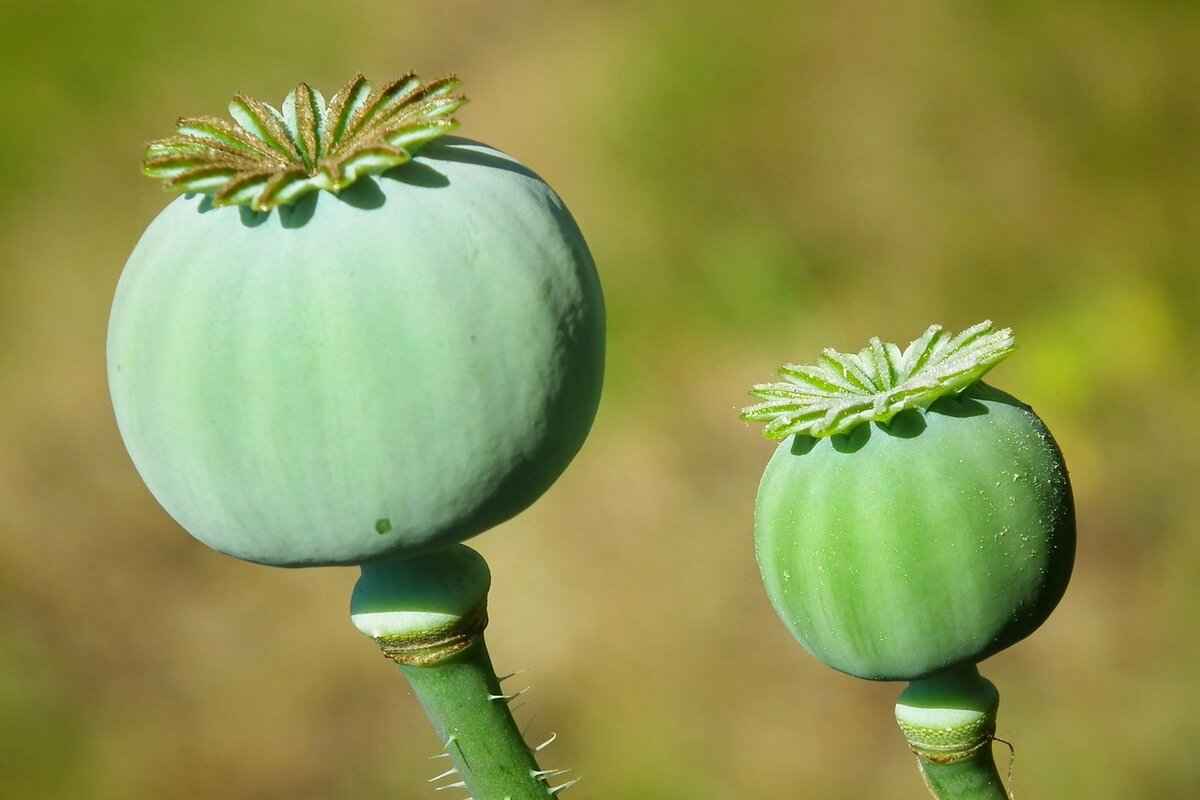
How to Incorporate Chia Seeds into Your Diet?
Chia seeds have gained immense popularity due to their numerous health benefits and versatility in cooking. These tiny seeds can easily be incorporated into a variety of meals, making them a favorite among health enthusiasts. In this section, we will explore how to incorporate chia seeds into your diet effectively.
Chia seeds are packed with essential nutrients, including fiber, protein, and omega-3 fatty acids. Their ability to absorb liquid and form a gel-like consistency makes them a unique ingredient that can enhance the texture and nutritional value of many dishes.
- Breakfast Boost: Start your day with chia seeds by adding them to your morning oatmeal or yogurt. Simply sprinkle a tablespoon on top for added crunch and nutrition.
- Smoothie Enhancer: Blend chia seeds into your smoothies for a thick, creamy texture. They can also help to keep you full longer, making them an excellent addition to your breakfast routine.
- Salad Topping: Sprinkle chia seeds on salads for an extra crunch. They can complement both savory and sweet salads, adding a nutritious boost.
- Baking Ingredient: Incorporate chia seeds into your baked goods, such as muffins or bread. They work well as a substitute for eggs when mixed with water, providing a vegan-friendly option.
- Chia Pudding: Create a delightful chia pudding by mixing chia seeds with your choice of milk and letting it sit overnight. Add fruits, nuts, or sweeteners to customize your dessert.
To maximize the benefits of chia seeds, it’s important to prepare them correctly. Soaking chia seeds in water or milk allows them to expand and become gelatinous, which enhances their digestibility. A common ratio is 1 part chia seeds to 4 parts liquid. Allow them to soak for at least 30 minutes or overnight for best results.
Here are some delicious recipes that incorporate chia seeds:
1. Chia Seed Pudding: - 1/4 cup chia seeds - 1 cup almond milk - Sweetener to taste - Mix ingredients and refrigerate overnight.2. Chia Smoothie: - 1 banana - 1 cup spinach - 1 tablespoon chia seeds - Blend all ingredients until smooth.3. Chia Seed Muffins: - 1 cup flour - 1/4 cup chia seeds - 1/2 cup sugar - Combine ingredients and bake at 350°F for 20-25 minutes.
Regular consumption of chia seeds can lead to improved digestive health, increased energy levels, and better heart health due to their high omega-3 content. They also promote a feeling of fullness, which can aid in weight management.
While chia seeds are generally safe for most people, it’s essential to consume them in moderation. Due to their high fiber content, drinking plenty of water when consuming chia seeds is crucial to prevent digestive discomfort.
Incorporating chia seeds into your meals is not only simple but also a delicious way to enhance your diet. With their myriad of health benefits and versatile applications, these tiny seeds can play a significant role in achieving your nutritional goals.
Popular Ways to Use Chia Seeds
Chia seeds are not just a trendy superfood; they are a versatile ingredient that can elevate the nutritional value of your meals. With their unique ability to absorb liquid and form a gel-like consistency, chia seeds can be incorporated into a variety of dishes. Here are some that not only enhance flavor but also boost health benefits.
One of the easiest ways to include chia seeds in your diet is by sprinkling them on salads. Their subtle nutty flavor complements a wide range of ingredients, from leafy greens to roasted vegetables. Not only do they add a delightful crunch, but they also introduce a wealth of nutrients, including fiber and omega-3 fatty acids. Try mixing them into your favorite vinaigrette for an added nutritional punch.
Chia seeds blend seamlessly into smoothies, making them a fantastic addition for those seeking a nutritious boost. When added to your smoothie, they not only enhance the texture but also contribute to a feeling of fullness, making it a perfect meal replacement. Experiment with different fruits and even greens to create a delicious, health-packed beverage that keeps you energized throughout the day.
Chia pudding is a delightful way to enjoy chia seeds. By mixing chia seeds with your choice of milk (dairy or plant-based) and a sweetener, you can create a creamy, satisfying dessert or breakfast option. Let the mixture sit for a few hours or overnight to allow the seeds to absorb the liquid and swell, resulting in a pudding-like consistency. Top it with fruits, nuts, or granola for a delicious and nutritious treat.
Chia seeds can also be used in baking. They can replace eggs in recipes, acting as a binding agent when mixed with water. This makes them a great option for vegan baking. Add them to muffins, breads, or pancakes for an added nutritional boost. Additionally, chia seeds can enhance the texture and moisture of baked goods, making them more enjoyable.
For a hearty breakfast, consider adding chia seeds to your morning cereal or oatmeal. Mixing them in not only increases the fiber content but also helps keep you full longer. Combine chia seeds with oats, yogurt, or your favorite cereal for a nutritious start to your day. The seeds can absorb the liquid and create a creamy texture that enhances the overall dish.
Chia seeds can be a surprising yet effective thickening agent in soups and stews. When added to hot liquids, they swell and help create a thicker consistency without altering the flavor. This method is particularly useful for those looking to increase their fiber intake while enjoying a comforting bowl of soup. Just be cautious not to add too many seeds at once, as they can quickly thicken the dish.
For a quick and healthy snack, consider making homemade energy bars that include chia seeds. They provide a great source of energy and nutrients. Combine them with oats, nut butter, and honey to create a delicious, on-the-go snack. These bars are perfect for pre- or post-workout fuel, giving you the energy boost you need.
Incorporating chia seeds into your diet is not only easy but also beneficial for your overall health. With their numerous applications, you can enjoy their advantages in a variety of delicious ways. Whether you sprinkle them on salads, blend them into smoothies, or create delightful puddings, chia seeds are a fantastic addition to any meal.
Chia Seed Recipes for Every Meal
Chia seeds are a remarkable addition to any diet, offering a plethora of health benefits and culinary versatility. From breakfast to dessert, there are countless recipes that utilize chia seeds, making it easy to include them in your daily meals. In this section, we will explore various ways to incorporate chia seeds into your diet, ensuring you enjoy their nutritional advantages while satisfying your taste buds.
Chia seeds are not only rich in omega-3 fatty acids and fiber, but they also act as a natural thickening agent, making them perfect for various dishes. Their ability to absorb liquid and expand in size allows for unique textures in recipes, making them a popular choice among health enthusiasts.
- Chia Seed Pudding: Combine chia seeds with your choice of milk (dairy or plant-based) and sweeten with honey or maple syrup. Let it sit overnight in the fridge for a creamy, nutritious breakfast.
- Chia Smoothie: Blend chia seeds into your morning smoothie for added texture and nutrition. They pair well with fruits like bananas, berries, and spinach.
- Overnight Oats: Mix chia seeds with rolled oats, yogurt, and your favorite fruits. This combination provides a hearty and filling breakfast option.
- Chia Seed Salad Dressing: Whisk chia seeds into your homemade vinaigrette for a nutritious boost. They add a delightful crunch and enhance the dressing’s consistency.
- Chia Energy Bites: Combine chia seeds with nut butter, oats, honey, and dark chocolate chips. Roll them into bite-sized balls for a quick, energizing snack.
- Chia-Crusted Chicken or Fish: Use chia seeds as a coating for chicken or fish fillets. The seeds provide a crunchy texture and a nutritious boost.
- Chia Seed Soups: Incorporate chia seeds into soups to enhance their thickness and nutritional value. They work well in both vegetable and meat-based soups.
- Chia Seed Jam: Mix chia seeds with mashed fruits like strawberries or blueberries and a bit of sweetener. Let it sit until it thickens, creating a delicious jam perfect for spreading on toast.
- Chia Seed Brownies: Add chia seeds to your brownie batter for added nutrition without compromising on taste. They blend seamlessly into the mixture.
Incorporating chia seeds into your meals is not only easy but also enjoyable. With their numerous health benefits and adaptability in various recipes, chia seeds can enhance your diet significantly. Whether you prefer them in a refreshing smoothie, a satisfying pudding, or even a savory dish, the possibilities are endless. Start experimenting with these recipes today and discover how chia seeds can transform your meals into nutritious delights!
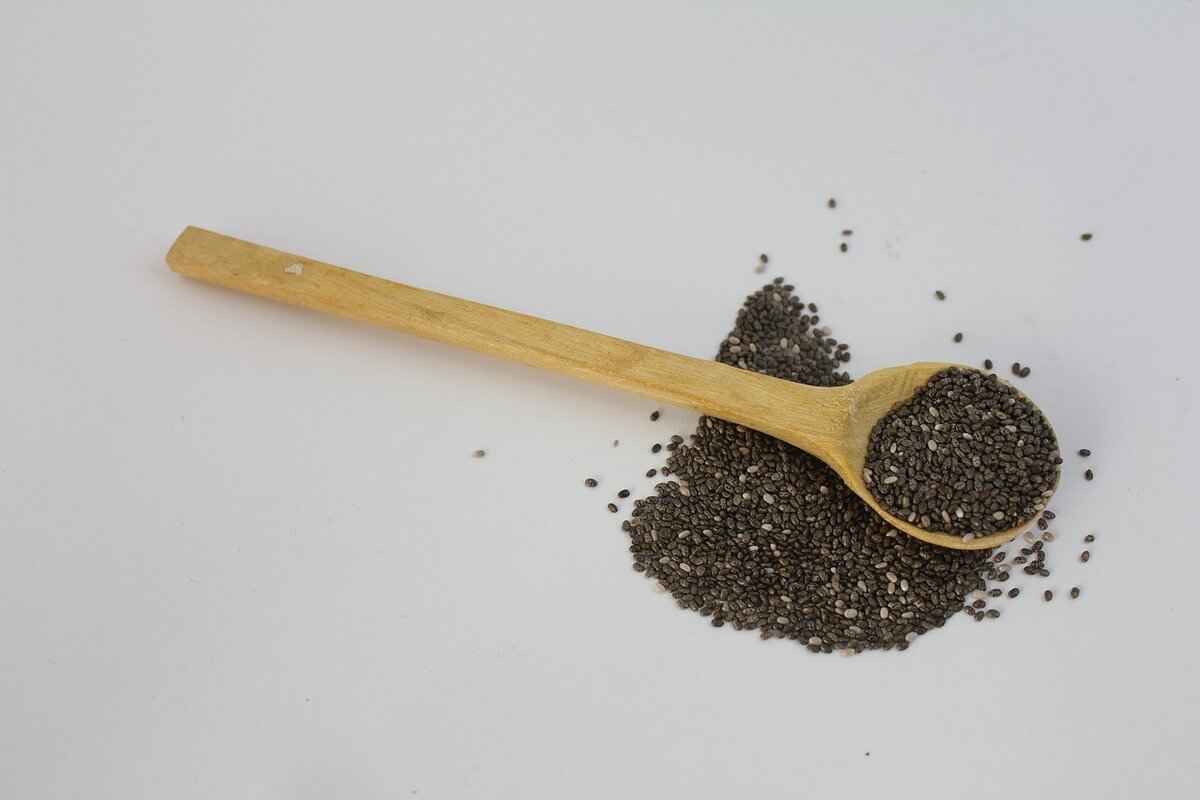
Are There Any Side Effects of Chia Seeds?
Chia seeds have gained immense popularity due to their numerous health benefits and versatility in culinary applications. However, like any food, they can have side effects for certain individuals. Understanding these potential issues is crucial for anyone looking to incorporate chia seeds into their diet.
While chia seeds are generally considered safe for most people, some may experience adverse reactions. Here are some common side effects:
- Digestive Issues: Chia seeds are high in fiber, and consuming them in large quantities without sufficient water can lead to digestive discomfort, including bloating and gas.
- Allergic Reactions: Although rare, some individuals may be allergic to chia seeds, resulting in symptoms like itching, swelling, or gastrointestinal distress.
- Blood Thinning Effects: Chia seeds are rich in omega-3 fatty acids, which have blood-thinning properties. Individuals on anticoagulant medications should consult with a healthcare provider before adding chia seeds to their diet.
Due to their high fiber content, chia seeds can absorb up to 12 times their weight in water. This property can be beneficial for hydration but can also cause issues if not enough water is consumed. When chia seeds are ingested dry, they can expand in the digestive tract, potentially leading to blockages or discomfort.
To avoid these issues, it is recommended to:
- Soak chia seeds in water or other liquids for at least 30 minutes before consumption.
- Gradually increase the intake of chia seeds to allow your digestive system to adjust.
- Drink plenty of water throughout the day, especially when consuming high-fiber foods.
Moderation is key when incorporating chia seeds into your diet. The recommended serving size is typically around 1-2 tablespoons per day. Exceeding this amount, especially without adequate hydration, may lead to the aforementioned digestive issues.
While chia seeds are a nutritious addition to most diets, certain populations may need to exercise caution:
- Individuals with Allergies: Anyone with a known allergy to sesame seeds or mustard seeds may also react to chia seeds.
- Pregnant and Nursing Women: Although chia seeds can be beneficial, it’s wise for pregnant or nursing women to consult with a healthcare provider before adding them to their diet.
- People with Digestive Disorders: Those with existing digestive issues, such as irritable bowel syndrome (IBS), may want to limit their intake of chia seeds.
If you encounter any adverse effects after consuming chia seeds, it’s important to:
- Stop consuming chia seeds immediately.
- Consult a healthcare professional, especially if symptoms persist or worsen.
- Keep a food diary to identify any potential triggers.
Chia seeds can be a healthy addition to your diet when consumed properly and in moderation. By being aware of the potential side effects and taking necessary precautions, you can enjoy the numerous benefits that these tiny seeds have to offer.
Potential Allergic Reactions
Chia seeds have gained immense popularity as a superfood due to their numerous health benefits. However, while they are generally safe for most people, it is important to be aware of the potential for allergic reactions. Understanding these reactions can help individuals make informed dietary choices.
Though allergic reactions to chia seeds are rare, they can occur in sensitive individuals. Symptoms may include:
- Itching or Rash: Skin reactions can manifest as hives or rashes, typically around the mouth or other areas that come into contact with chia seeds.
- Gastrointestinal Distress: Some individuals may experience stomach cramps, diarrhea, or nausea after consuming chia seeds.
- Respiratory Issues: In more severe cases, allergic reactions can lead to difficulty breathing or wheezing, which requires immediate medical attention.
Individuals with a history of food allergies, particularly to other seeds or nuts, may be at a higher risk of developing an allergy to chia seeds. It is essential for these individuals to consult with a healthcare professional before introducing chia seeds into their diet.
If you suspect that you may have an allergy to chia seeds, it is crucial to monitor your symptoms closely. Keeping a food diary can help identify any correlations between chia seed consumption and allergic reactions. If you experience any symptoms, it is advisable to:
- Seek Medical Advice: Consult with an allergist for testing and guidance.
- Avoid Chia Seeds: If an allergy is confirmed, eliminating chia seeds from your diet is essential.
- Read Labels Carefully: Many health foods and snacks may contain chia seeds, so always check ingredient lists.
For those who are allergic to chia seeds but still want to reap the benefits of similar nutrients, consider these alternatives:
- Flaxseeds: Rich in omega-3 fatty acids and fiber, flaxseeds can be used in similar ways as chia seeds.
- Hemp Seeds: Another excellent source of protein and healthy fats, hemp seeds can be sprinkled on salads or blended into smoothies.
- Sunflower Seeds: These seeds offer a nutty flavor and are packed with vitamins and minerals, making them a great substitute.
For those who can safely consume chia seeds, it is important to note that they absorb a significant amount of water. Hydration is key to prevent digestive discomfort. When consuming chia seeds, it is recommended to:
- Soak Chia Seeds: Soaking chia seeds in water or other liquids before consumption can help reduce the risk of digestive issues.
- Increase Water Intake: Ensure adequate hydration throughout the day to support digestive health.
In summary, while chia seeds offer numerous health benefits, it is essential to be aware of the potential for allergic reactions. By understanding the symptoms, risks, and management strategies associated with chia seed allergies, individuals can make informed decisions regarding their dietary choices.
Importance of Hydration When Consuming Chia Seeds
When it comes to chia seeds, understanding the importance of hydration is essential for maximizing their health benefits. Chia seeds, known for their high fiber content, can absorb up to 12 times their weight in water, which can be beneficial for digestion but also necessitates adequate fluid intake. This article delves into why hydration is crucial when consuming chia seeds and how it impacts overall health.
The high fiber content in chia seeds, approximately 10 grams per ounce, can lead to digestive issues if not accompanied by sufficient water intake. When chia seeds are consumed dry, they can swell in the digestive tract, potentially leading to discomfort or constipation. Therefore, drinking plenty of water helps to:
- Facilitate digestion: Water aids in breaking down food and helps the body absorb nutrients effectively.
- Prevent constipation: Adequate hydration ensures that fiber can do its job by softening stools and promoting regular bowel movements.
- Enhance fiber benefits: Water combined with fiber creates a gel-like substance that slows digestion, promoting a feeling of fullness and aiding in weight management.
The amount of water one should drink can vary based on individual needs, activity levels, and climate. A general guideline is to aim for at least 8-10 cups of water per day. However, when incorporating chia seeds into your diet, consider increasing your water intake. Here are some tips:
- Before consumption: Soak chia seeds in water for at least 30 minutes before eating. This allows them to expand and reduces the risk of digestive discomfort.
- During meals: Drink a glass of water with meals that include chia seeds to aid digestion.
- Throughout the day: Keep a water bottle handy to ensure you meet your hydration needs.
Recognizing the signs of dehydration is crucial, especially when consuming high-fiber foods like chia seeds. Some common symptoms include:
- Dry mouth: A noticeable lack of moisture in the mouth can indicate dehydration.
- Fatigue: Feeling unusually tired or lethargic may be a sign that your body needs more fluids.
- Headaches: Dehydration can lead to headaches or migraines, particularly if you consume fiber-rich foods without adequate water.
- Dark urine: A change in urine color to a darker shade can signal dehydration.
While staying hydrated is important, it is also possible to overhydrate, which can lead to a condition known as hyponatremia, where sodium levels in the blood become dangerously low. Symptoms of overhydration may include:
- Nausea and vomiting
- Headaches
- Confusion or disorientation
To avoid this, it’s essential to listen to your body and drink water in moderation.
Incorporating chia seeds into your diet can be a nutritious choice, but it is vital to pair them with adequate hydration. By understanding the relationship between chia seeds and water intake, you can enjoy their health benefits while minimizing potential digestive issues. Remember, a well-hydrated body is key to maximizing the advantages of these tiny yet powerful seeds.

Where to Buy Quality Chia Seeds?
Finding high-quality chia seeds is essential for maximizing their health benefits. With their rising popularity, chia seeds can be found in a variety of places, making it easier for consumers to incorporate them into their diets. However, not all chia seeds are created equal, and knowing where to purchase them can significantly impact the nutritional value and overall quality.
- Health Food Stores: Local health food stores often carry a selection of organic chia seeds. These stores typically prioritize quality and may offer products that are sourced from reputable suppliers.
- Online Retailers: Numerous online platforms provide a vast array of chia seed options. Websites like Amazon, Thrive Market, and specialty health food sites allow you to read reviews and compare prices easily.
- Supermarkets: Many supermarkets now have a health foods aisle where you can find chia seeds. Look for brands that emphasize organic or non-GMO certifications.
- Farmers’ Markets: Purchasing chia seeds directly from local farmers’ markets can be a great way to ensure freshness and support local agriculture.
When shopping for chia seeds, consider the following factors to ensure you’re getting the best product:
- Organic Certification: Organic chia seeds are free from harmful pesticides and chemicals. Look for products that are certified organic to ensure you are making a healthy choice.
- Packaging: Quality packaging is crucial for maintaining the freshness of chia seeds. Opt for seeds that are stored in airtight containers that protect them from light and moisture.
- Source: Research the origin of the chia seeds. Seeds sourced from regions known for their agricultural standards, such as South America, are often of higher quality.
- Expiration Date: Always check the expiration date to ensure freshness. Chia seeds can last a long time, but older seeds may lose their nutritional benefits.
Yes, there can be significant differences between brands of chia seeds. Some brands may use better sourcing practices, while others may prioritize cost over quality. Reading reviews and seeking recommendations can help you identify reputable brands. Furthermore, consider trying a few different brands to find the one that best meets your taste and texture preferences.
To ensure the chia seeds you purchase are fresh, follow these tips:
- Buy in Small Quantities: If possible, purchase smaller amounts more frequently. This reduces the risk of seeds sitting on the shelf for too long.
- Check for Clumping: Fresh chia seeds should be dry and free-flowing. If you notice clumping, it may indicate moisture exposure, which can lead to spoilage.
In summary, finding high-quality chia seeds involves knowing where to look and what to consider when making a purchase. By exploring various retailers, paying attention to certifications and packaging, and being mindful of freshness, you can enjoy the numerous health benefits that chia seeds have to offer.
Choosing Organic vs. Non-Organic Chia Seeds
When it comes to selecting chia seeds, consumers often find themselves faced with the choice between organic and non-organic options. This decision can significantly impact not only the quality of the seeds but also the overall health benefits they provide. Understanding the differences between these two categories is essential for making an informed choice.
What Are Organic Chia Seeds?
Organic chia seeds are produced without the use of synthetic pesticides, herbicides, or fertilizers. They are grown in accordance with strict agricultural guidelines that promote sustainable farming practices. This means that the seeds are cultivated in a way that not only protects the environment but also enhances the nutritional value of the seeds themselves. Additionally, organic farming methods often lead to healthier soil, which can contribute to the overall quality of the chia seeds.
Why Choose Organic Chia Seeds?
- Free from Harmful Chemicals: Organic chia seeds are less likely to contain pesticide residues, making them a safer choice for health-conscious consumers.
- Better Nutritional Profile: Studies suggest that organic seeds may have higher levels of certain nutrients, including antioxidants.
- Environmental Benefits: Choosing organic supports sustainable farming practices that protect biodiversity and reduce pollution.
What Are Non-Organic Chia Seeds?
Non-organic chia seeds, on the other hand, may be treated with various chemicals during their growth cycle. While they can still offer health benefits, the presence of these substances raises concerns for consumers who prioritize health and environmental sustainability. Non-organic seeds are often less expensive, which can be appealing for budget-conscious shoppers.
Are Non-Organic Chia Seeds Safe to Consume?
While non-organic chia seeds are generally considered safe for consumption, the potential presence of pesticide residues can be a concern. It is crucial for consumers to wash the seeds thoroughly before use, although this may not eliminate all residues. Additionally, the long-term health effects of consuming non-organic produce are still under investigation, leading some to prefer organic options for peace of mind.
How to Identify Quality Chia Seeds?
Regardless of whether you choose organic or non-organic chia seeds, it is important to look for high-quality products. Here are some tips:
- Check the Source: Look for chia seeds sourced from reputable farms or brands that prioritize quality.
- Read Labels: Pay attention to certifications, such as USDA Organic, to ensure you are purchasing genuine organic products.
- Examine Packaging: Quality packaging can help preserve the freshness and nutritional integrity of chia seeds.
Where to Purchase Organic Chia Seeds?
Organic chia seeds can be found in various locations, including health food stores, organic markets, and online retailers. When shopping online, be sure to read customer reviews and check for third-party testing to ensure product quality. This diligence can help you find the best organic chia seeds that meet your dietary needs.
Final Thoughts
Choosing between organic and non-organic chia seeds ultimately comes down to personal preference and values. For those who prioritize health and environmental sustainability, organic chia seeds are often the preferred choice. However, non-organic options can still provide health benefits if sourced carefully. By understanding the differences and making informed decisions, consumers can enjoy the numerous benefits that chia seeds offer.
Understanding Chia Seed Labels
When it comes to purchasing chia seeds, understanding the labels is crucial for making informed choices. With the growing popularity of these tiny superfoods, various brands and types are available on the market. To ensure you select the best quality, it is essential to focus on several key factors highlighted on the packaging.
Reading labels carefully can significantly impact your health and wellness journey. It allows you to identify the best chia seeds by focusing on sourcing, packaging, and expiration dates, which are vital for optimal freshness. Let’s delve into the specifics.
- Sourcing: Look for information about where the chia seeds are sourced. Seeds grown in regions known for quality agriculture, such as Central and South America, are often superior in taste and nutritional value.
- Organic Certification: Organic chia seeds are free from harmful pesticides and chemicals. Check for a certified organic label to ensure you are choosing a healthier option for your diet.
- Packaging: The packaging of chia seeds can affect their freshness. Opt for seeds that are packaged in dark, airtight containers to protect them from light and moisture, which can degrade their quality.
- Expiration Dates: Always check the expiration date on the label. Fresh chia seeds have a longer shelf life, but consuming them past their expiration can lead to a loss of nutritional benefits and, in some cases, spoilage.
Understanding the nutritional information on the label is equally important. Look for:
- Serving Size: This helps you gauge how much you need to consume to meet your nutritional goals.
- Calories and Macronutrients: Chia seeds are high in calories, primarily from healthy fats. Ensure you balance your intake with other foods in your diet.
- Fiber Content: High fiber content is one of the main reasons people consume chia seeds. Aim for brands that highlight their fiber benefits on the label.
Be cautious of labels that lack transparency. Avoid brands that do not provide clear information about sourcing, production methods, or nutritional content. Additionally, steer clear of products with added sugars or preservatives, as they can diminish the health benefits of chia seeds.
Quality chia seeds can be found in health food stores, supermarkets, and online retailers. Always opt for reputable brands that prioritize quality and transparency in their labeling.
In conclusion, taking the time to read and understand chia seed labels can profoundly affect your overall health and wellness. By focusing on sourcing, organic certification, packaging, expiration dates, and nutritional content, you can ensure that you are making the best choices for your body. Remember, informed consumers are empowered consumers!
Frequently Asked Questions
- What are the health benefits of chia seeds?
Chia seeds are packed with nutrients! They’re rich in omega-3 fatty acids, fiber, and protein, making them great for heart health and digestive wellness. Plus, they can help you feel full, which is perfect for weight management.
- How do I incorporate chia seeds into my meals?
You can sprinkle them on salads, mix them into smoothies, or even make delicious chia pudding! Their versatility means you can enjoy them in various dishes throughout the day.
- Are there any side effects of consuming chia seeds?
While chia seeds are generally safe, some people might experience digestive discomfort, especially if they don’t drink enough water. It’s crucial to stay hydrated when enjoying these little powerhouses!
- Where can I buy quality chia seeds?
You can find chia seeds at health food stores, supermarkets, or online. Just make sure to check if they’re organic and read the labels for the best quality!
- What are the ideal growing conditions for chia plants?
Chia plants thrive in warm climates with plenty of sunlight and well-drained soil. If you’re thinking of growing them, aim for sandy or loamy soil to ensure a healthy crop!

